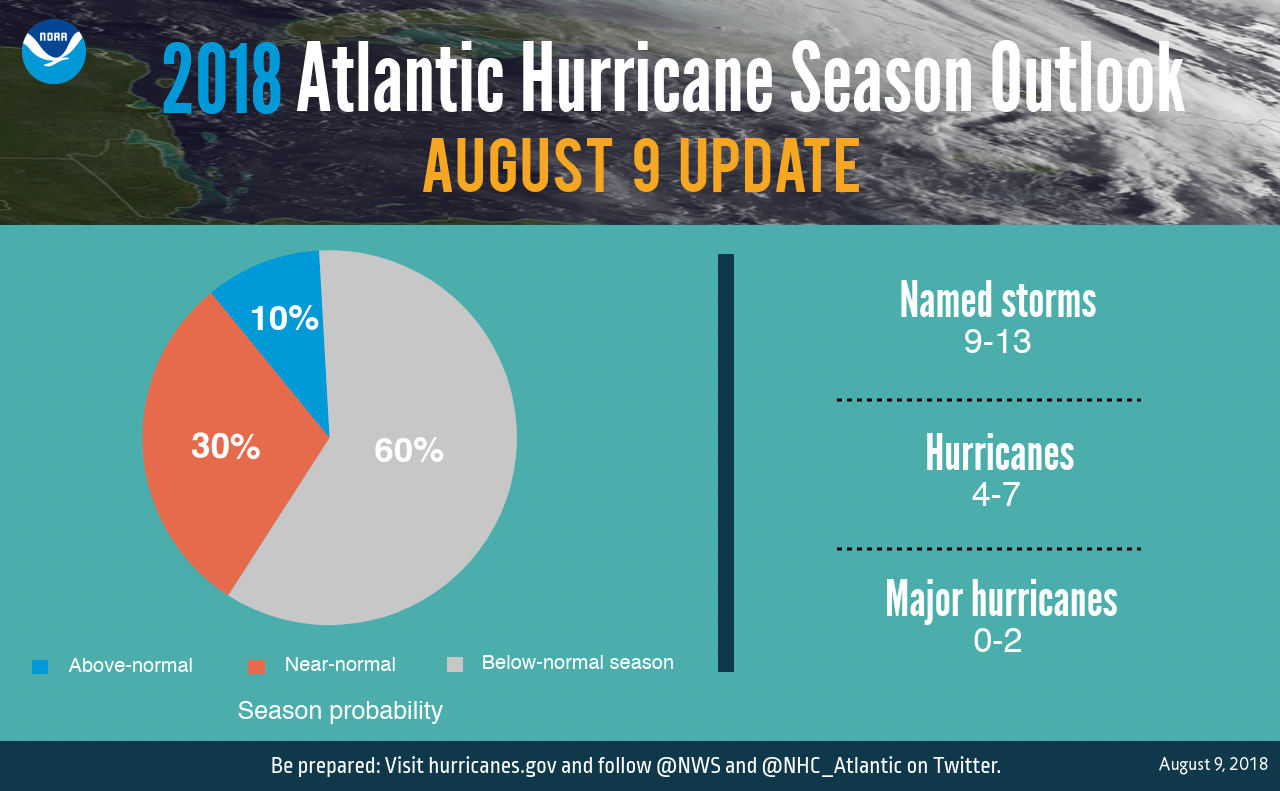Updated Hurricane Outlook
Early July was an active time for the Atlantic Ocean as two hurricanes churned through largely open waters.
The Atlantic hurricane season has been off to a relatively quiet start, especially compared to the powerful storms that were barreling through the Caribbean and Gulf Coast just about a year ago. An average hurricane season typically produces twelve named storms throughout the entirety of the season. With only five named storms (as of August 30) occurring in the Atlantic Ocean so far this year, the National Hurricane Center recently published an updated outlook for the remainder of the season.
Updated predictions for the second half of the hurricane season are shown in a graphic created by the National Hurricane Center.
NOAA forecasters are now expecting increased chances of a below-normal hurricane season based on current and predicted conditions in the ocean and the atmosphere that typically suppress tropical development. Though this news might come as a relief to some, it is important to remember that the number of storms predicted does not impact or change the likelihood of landfall.
The peak of the Atlantic hurricane season is from August through October, when the ocean is usually the warmest it gets all year.
Ocean temperatures have been slightly cooler than normal and wind shear has been stronger over the region where tropical storms generally form. Another factor contributing to lower tropical activity is that El Niño is likely to develop later this year. Warmer sea surface temperatures across the central Pacific Ocean correlate to an El Niño, which can cause a wide range of changes in the tropics. Stronger wind shear over the Atlantic (which means clouds have a harder time developing into organized clusters of larger storms), in addition to an unfavorable wind pattern for tropical development and other atmospheric factors, have helped contribute to a less active hurricane season so far. Although people often associate hurricanes with summer, it’s good to be reminded that hurricane season officially goes until November 30. The National Hurricane Center monitors both the Pacific and Atlantic Oceans, so be sure to check their website for more information on potential tropical cyclone developments.



